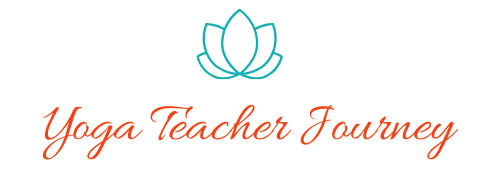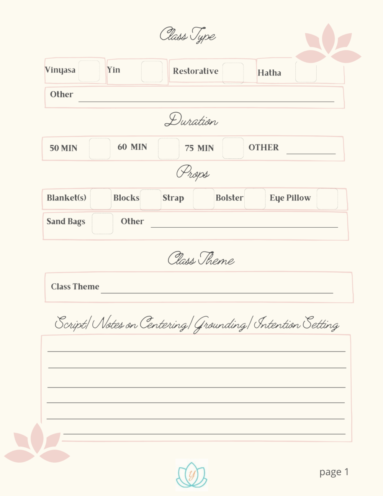The Yoga Sutras are a compilation of 196 aphorisms believed to be written by the sage, Patanjali Maharishi, some 2,000 plus years ago. It is in the Yoga Sutras where we first learn about the 8 Limbs of Yoga (Ashtanga).
The Sutras are a great source of inspiration to create themes for your classes. Using the sutras, you can bring ancient wisdom into your classes. By doing so, you’ll inform your students about yoga philosophy and provide thoughtful prompts for life that still apply today.
In this post, I will translate four of Patanjali’s Yoga Sutras – one from each Pada (Sanskrit word for “foot”), or chapter. Translated, these favorite four sutras offer powerful insight to our lives and to our yoga practice.
When using the following themes, provide the sutra number and translation to the class. If needed, give a brief description of the Yoga Sutras of Patanjali, as provided above.
Sutra 1:2 Yoga citta vritti nirodhah
Citta Vrtti = mind chatter
Nirodhah = cessation or removal
Opening/Centering
Sutra 1:2 Translation = Yoga is the removal of the mind chatter.
Early on, in the second sutra of the very first pada (Samadhi), Patanjali states the definition of yoga. Yoga is the quieting of the mind.
Ask students to bring awareness to their breath acknowledging their presence and what brought them to their mat. Ask them to pause and take special notice of their current mental status.
What type of thoughts and emotions are playing through their mind? Do they have anxiety and worry about an upcoming event or a situation currently taking place that is out of their control? Maybe they are concerned about something held over from their job or their mind is re-playing a conversation with a friend or family member they wish had gone differently.
As they acknowledge these thoughts, cue them with each exhale to begin releasing them, to allow them to float away.
You may use a cloud visualization exercise to assist students with releasing these thoughts. Ask them to envision placing their thoughts on clouds and watching them drift through their awareness.
Before long they will notice more blue sky (representing peacefulness) and spaciousness between the clouds. With each inhale, cue them to breathe in calmness, letting peaceful thoughts enter their mind.
As students set an intention for their practice, ask what is really important in their lives? Remind them to focus on their calm state of mind, in this moment – the only moment we ever really have.
During the Practice
Throughout the practice remind students to release any negativity or judgement of themselves experienced now or over the last couple of days. Perhaps cue to let it go through an exhale during an asana (a five breath Adho Mukka Savasana might work well). Remind them to inhale positivity during an asana (perhaps standing grounded and tall in Tadasana or while feeling balanced and strong during Virabahdrasana I).
Closing/Savasana
Recite the Sanskrit phrase, “As the mind, so the person. Bondage or liberation are in your own mind” reminding them that their thoughts manifest themselves as their reality.
Culminate the experience by guiding students through a tense and release meditation at the end of the practice moving into Savasana. Grabbing onto any last bits of remaining tension, squeezing them and releasing them.
Sutra 2:14 Te hlada paritapa phalah punya apunya hetutvat
Te = they
Hlada = pleasant, delight
Paritapa = pain, agony, anguish
Phalah = fruits
Punya = virtuous
Apunya = non-virtuous
Hetutvat = having as their cause (the punya or apunya)
Opening/Centering
Sutra 2:14 Translation = Our actions result in consequences of pleasure and pain caused by virtuous and non-virtuous actions.
Pada 2, Sadhana, in Patanjali’s Yoga Sutras is about discipline in our practice toward a certain goal.
In order to achieve the goal of yoga, our practice should be undertaken with awareness, observation, and non-attachment.
In doing so, we are mindful of our actions and understand the outcome of our virtuous and non-virtuous behavior. In other words, our karma. This refers to not only our practice on the mat, but of our practice of yoga in life as well.
As students set an intention for their practice, remind them to be mindful of their actions during their practice. Remember to focus on your goal without attachment to an end result.
During the Practice
Remind students to bring awareness to what actions are taking place now in this posture. Are you applying discipline to your practice? Are you observing what you’re feeling in your body with equanimity and even mindedness?
Closing/Savasana
The ancient yoga texts such as the Bhagavad Gita and the Yoga Sutras of Patanjali suggest that leading a life of equanimity will lead us to freedom from suffering. We can translate this lesson to our yoga practice by focusing on the effort in our practice without attaching to the outcome.
When we continue this practice through life and focus on our actions instead of the outcomes, we are more likely to lead a life without suffering.
“May all beings have happiness and the causes of happiness.”
“May all beings be free from suffering and the causes of suffering.”
“May all beings never be parted from freedom’s true joy.”
“May all beings dwell in equanimity, free from attachment and aversion.”
~ Buddhist Prayer
Sutra 3:30 nabhi chakra kaya vyuha jnanam
nabhi = navel
chakra = energy center; circular; wheel
kaya = the body
vyuha = arrangement; structure; formation
jnanam = knowledge; awareness
Opening/Centering
Sutra 3:30 Translation = By samyama (combined practice of Dharana – concentration, Dhyana – meditation, and Samadhi – integration) on the navel plexus, knowledge of the body’s constitution is obtained.
Vibhuti, the third pada, is on manifestation. The word “Vibhuti” means by-product. It also refers to sacred ash (by-product of burned wood) used in Hindu rituals.
This sutra reminds us to trust our gut feelings. Knowing that the solar plexus is the center of our body helps us understand feelings that may arise from this area. Manipura (third chakra) is the Sanskrit word for the solar plexus, also translated to mean “shining gem.” This is where our self-confidence, self-worth, and willpower arise from.
By focusing or meditating on this area, the navel plexus (also called the solar plexus) can be a source of empowerment that can guide you through the asanas in your practice as well as through your life.
During the Practice
Standing tall in Tadasana, invite students to find their solar plexus in their own body (a few inches above the navel). Ask them to acknowledge this area as it guides them; gives them courage and strength.
Remind students to check-in with their solar plexus during various asanas throughout the practice (such as Virabhadrasana (Warrior) I, II and III. Perhaps ask how they feel in Garudasana (Eagle Pose) when they are closed off, protecting their solar plexus region versus when they were in the warrior poses, open and exuding strength.
Closing/Savasana
Finally, preparing for savasana, ask students to visualize and focus on their solar plexus. As the center of their body, all nadis (energy pathways) and prana flow through this area.
You may guide students to use the Vajra Diamond Mudra as they are reflecting on all the benefits their yoga practice provided to honor their body and keep their lives balanced and centered.
A Vajra Mudra Meditation is provided here by Caren Baginski. I have guided students through this mediation seated as well as in Savasana.
Sutra 4:15 Vastu sāmye citta bhedāt tayoḥ vibhaktaḥ panthāḥ
Vastu = reality, real object
Sāmya = equality, evenness, equal, likeness, sameness
Citta = human mind, conscious and unconscious mind
Bheda = contrast, difference
Tayoḥ = of both
Vibhakta = separate
Panthan = path, course
Opening/Centering
Sutra 4:15 Translation = Each person’s perception follows a separate path, therefore perception of even the same object may vary.
Even before reading the Yoga Sutras, I would frequently remind myself of this idea. Everyone sees things differently. Two people can be raised in the same household, by the same parents and look back on their childhoods in completely different ways. It reminds us that no two people are the same.
Not only do we think differently and therefore arrive at different conclusions, but we are each physically different too. No two bodies are the same. We may have similar structures, but even our anatomy varies from person to person.
What brought each of you to your mat today was something different. And what each of you will take away from your practice will be different as well. But what we all share is the knowledge that we will each benefit physically, mentally, and perhaps spiritually, from our yoga practice.
During the Practice
Wherever you are right now is okay. Remind students in need of or who choose blocks or a strap to assist in a posture, that is fine. There is no judgment in yoga; we are all different. Honor what you feel in your body.
Closing/Savasana
In conclusion, reiterate – whatever you take away from your practice today is uniquely yours. Your perception is unique because we are all individuals.
“Do not underestimate yourself by comparing yourself with others. It’s our differences that make us unique and beautiful.”
~ tinybuddha.com
Resources
The Yoga Sutras of Patanjali by Sri Swami Satchidananda
Decoding Sutra 3.30: How Concentrating on the Navel Encourages Body Awareness
https://theyogainstitute.org/patanjali-yoga-sutra-2-14-parisamvad





